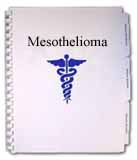Lung Cancer Staging
If the diagnosis is lung cancer, the doctor will want to
learn the stage (or extent) of the disease. Lung cancer staging
is done to find out whether the cancer has spread and, if
so, to what parts of the body. Lung cancer often spreads to
the brain or bones. Knowing the lung cancer stage of the disease
helps the doctor plan treatment. Some tests used to determine
the lung cancer stage and whether the cancer has spread include:
- CAT (CT) scan (computed tomography). A computer
linked to an x-ray machine creates a series of detailed pictures
of areas inside the body.
- MRI (magnetic resonance imaging). A powerful magnet
linked to a computer makes detailed pictures of areas inside the
body.
- Radionuclide scanning. Scanning can show whether
cancer has spread to other organs, such as the liver. The patient
swallows or receives an injection of a mildly radioactive substance.
A machine (scanner) measures and records the level of radioactivity
in certain organs to reveal abnormal areas.
- Bone Scan. A bone scan, one type of radionuclide
scanning, can show whether cancer has spread to the bones. A small
amount of radioactive substance is injected into a vein. It travels
through the bloodstream and collects in areas of abnormal bone
growth. An instrument called a scanner measures the radioactivity
levels in these areas and records them on x-ray film.
- Mediastinoscopy/Mediastinotomy. A mediastinoscopy
can help show whether the cancer has spread to the lymph nodes
in the chest. Using a lighted viewing instrument, called a scope,
the doctor examines the center of the chest (mediastinum) and
nearby lymph nodes. In mediastinoscopy, the scope is inserted
through a small incision in the neck; in mediastinotomy, the incision
is made in the chest. In either procedure, the scope is also used
to remove a tissue sample. The patient receives a general anesthetic.
Non-small cell lung
cancer is staged according to tumor size, level of lymph
node involvement and extent of distant metastases (spread).
Stages are identified in the following ways:
- Stage 0 Lung Cancer. The cancer is limited to the lining
of air passages and hasn't invaded lung tissue. The cancer can
usually be eliminated when caught and treated.
- Stage I Lung Cancer. The cancer has spread to layers
of lung tissue but has not reached the lymph nodes or beyond.
There is a 60 percent to 80 percent chance of surviving the disease
5 years when it's caught and treated at this stage.
- Stage II Lung Cancer. The cancer has invaded neighboring
lymph nodes or spread to the chest wall. There is a 40 percent
to 50 percent chance of surviving the disease 5 years when it's
caught and treated at this stage.
- Stage IIIA Lung Cancer. The cancer has spread from the
lung to lymph nodes beyond the lung area. Cancer usually isn't
treated surgically at this stage. There is a 15 percent to 30
percent chance of surviving 5 years when the disease is caught
and treated with radiation or chemotherapy at this point.
- Stage IIIB Lung Cancer. The cancer has spread to areas
such as the heart, blood vessels, trachea and esophagus - all
within the chest. Cancer can't be treated surgically at this stage.
A 10 percent to 15 percent chance of surviving 5 years exists
when the disease is treated at this point.
- Stage IV Lung Cancer. In Stage 4 lung cancer the cancer
has spread to other parts of the body, such as the liver, bones
or brain. There is less than a 2 percent chance of surviving the
disease 5 years when it's treated at this stage.
|

































